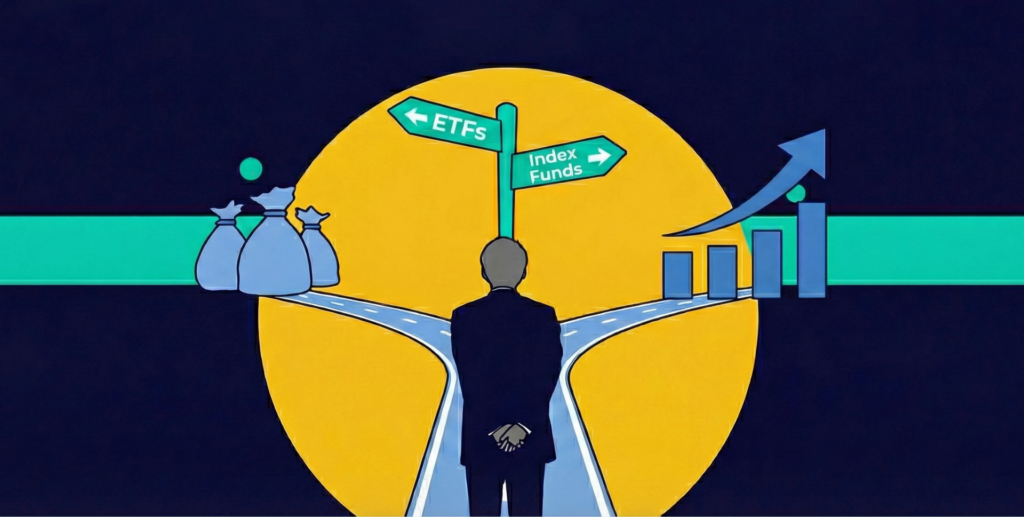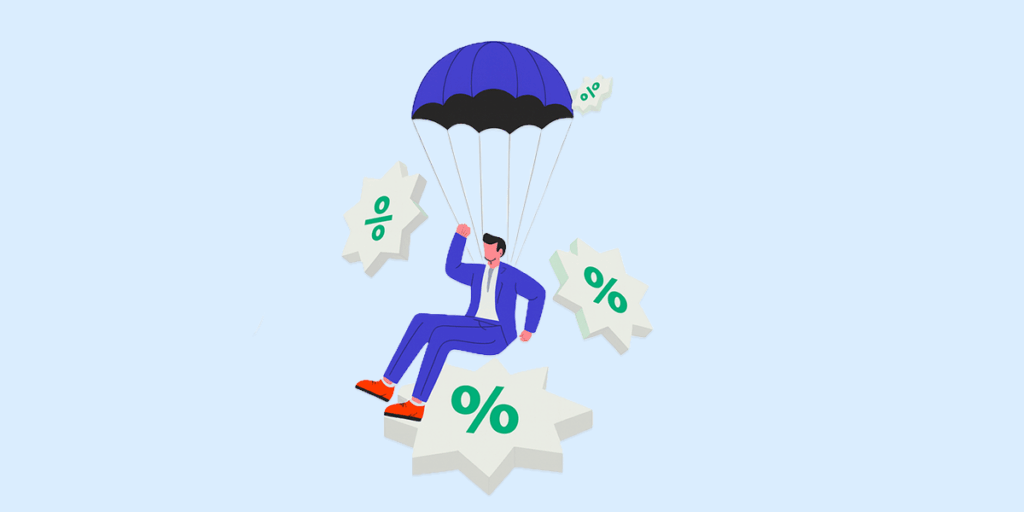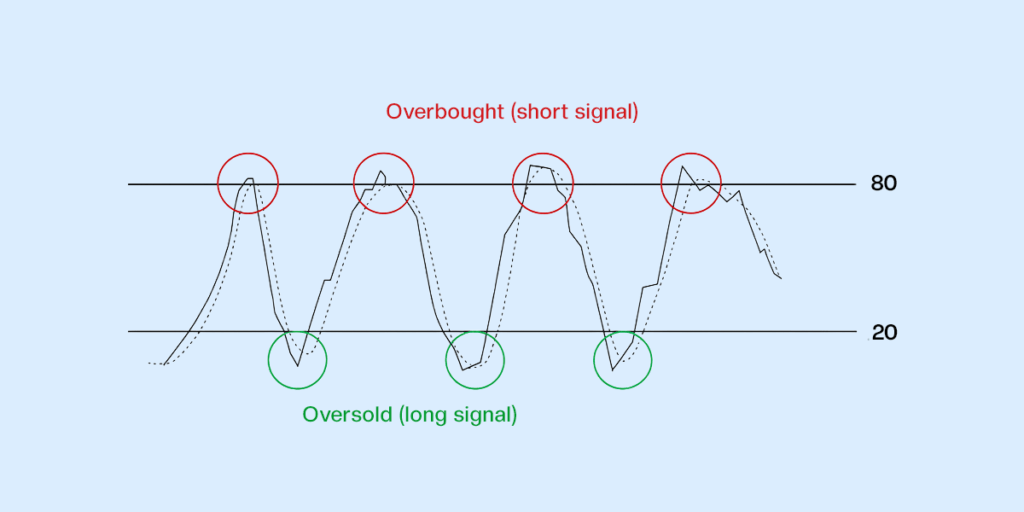The stock market is subject to several kinds of cycles and trends. There are times when stock prices experience a continuous increase, and investors feel confident about future prospects. There are also times when stocks experience prolonged declines in value, and investors flock to safer securities.
These two main categories of market conditions and behaviours are commonly known as bull and bear markets respectively. Bulls and bears are both strong animals in the animal kingdom that are known to be aggressive when it comes to their prey. But what is ‘bull’ and ‘bear’ in the context of the stock market? And how do bull and bear markets impact your investments? Read on to find out.
Table of contents
1. What is a bull market?
2. What is a bear market?
3. Indicators of a bull market
4. Indicators of a bear market
5. What are the key differences between bull markets and bear markets?
6. How should you invest in bull and bear markets?
7. Bulls, bears, and the bottom line
8. Frequently asked questions
1. What is a bull market?
A bull market is the condition of the stock market and some other financial market when stock prices are rising or are expected to rise. It coincides with favourable economic conditions — when the GDP is growing, the unemployment level is low, and the market sentiment is optimistic.
More technically, if a stock market index has increased by at least 20% since the last market downturn, then it can be said that a bull market phase is under way. A bull market is characterised by broad gains over an extended period of time.
The longest bull market in the US lasted for 11 years — it began during the financial crisis in March 2009 and came to an end in February 2020 when the COVID-19 pandemic broke out. During this period, the S&P 500 index delivered gains of more than 400%.
2. What is a bear market?
A bear market is the opposite of a bull market. It is when the prices of securities are declining continuously, and there is negative investor sentiment. Bear markets tend to coincide with unfavourable economic conditions — low consumer spending, a high unemployment level, a drop in corporate earnings, and a sluggish economy overall. Often, a bear market is accompanied by a recession.
Technically speaking, a market decline of 20% or more from the most recent high marks a bear market. A bear market can last anywhere between a few weeks to a few decades. Since World War II, there have been about 15 bear markets in the US, which have lasted about ten months on average. The average market decline during these phases has been close to 30%.
While price movements are the primary way to determine whether the stock market is in a bull or bear phase, there are some other accompanying indicators too. Let’s take a look.
3. Indicators of a bull market
Some of the key indicators of a bull market include:
3.1 Rise in prices
During a bull market, the prices of stocks tend to rise over time. The market sentiment is optimistic, and investors are confident about the future performance of companies and their stocks. Hence, the demand for stocks is strong and the supply may not match up. That’s because most investors want to buy and hold stocks while few want to sell. This mismatch of demand and supply further pushes the price of stocks up, which, in turn, attracts even more buyers.
3.2 Positive market sentiment
In a bull market, investors expect the prices of stocks to continue rising and are quite optimistic. Investors tend to feel that there are opportunities for growth and profit at all three levels — their investment portfolio, companies, and the overall economy. Hence, they are willing to not only invest more in stocks but also take more risks.
3.3 Favourable economic conditions
Economic conditions are usually strong during a bull market. There is GDP growth, the level of employment and wages increase, and corporate profits rise. Consumer spending tends to increase, and companies also tend to invest in new projects. This further stimulates the economy, leading to further growth.
3.4 High IPO activity
Initial Public Offers (IPOs) tend to increase in number during a bull market. This is because investors are looking at buying more stocks and taking more risks. Overall investor confidence is high, and the prices in the stock market are also high. Such an atmosphere makes it attractive for companies to go public and raise capital to expand their businesses.
4. Indicators of a bear market
Some of the key indicators of a bear market include:
4.1 Fall in prices
In a bear market, prices of stocks tend to fall over time. Given the sluggish economic conditions that accompany a bear market, companies may see a decline in profits and growth. This impacts investor confidence, and the overall market sentiment becomes pessimistic. Hence, the demand for stocks decreases, bringing down the stock prices. As prices fall, the pressure to sell stock to limit losses increases, which further increases the supply of stocks while the demand remains low.
4.2 Negative market sentiment
The general market sentiment during a bear market tends to be negative and pessimistic. There is volatility and investors are uncertain about the future of stocks, companies, and the overall economy. They are likely to sell or exit their equity positions and take fewer investment risks. During a bear market, investors are also concerned about a recession and declining corporate profits, which leads to a sense of anxiety about the future.
4.3 Unfavourable economic conditions
The GDP growth rate is low, unemployment is typically high, and corporate profits tend to decline during a bear market. A bear market is often an indicator of a looming recession, though this is not always the case. Consumer spending decreases as more people lose their jobs, which worsens the economic outlook. This, in turn, makes companies delay or altogether cancel expansion plans, and overall investment activity in the economy falls.
4.4 Low IPO activity
Companies tend to not launch IPOs during a bear market since the market sentiment is negative and the demand for new investments decreases. It’s also a time when investors are focused on preserving their capital and preventing losses, and are thus cautious. That’s why IPO activity tends to be low during a bear market, as companies don’t find the market conditions to be favourable for raising capital.
5. What are the key differences between bull markets and bear markets?
Here are some of the key differences generally observed between a bull market and a bear market.
| Parameter | Bull market | Bear market |
| Stock prices | Rising | Falling |
| Investor sentiment | Positive and optimistic | Negative and cautious |
| Risk appetite of investors | High | Low |
| Corporate earnings | Strong | Weak |
| Consumer spending | High | Low |
| GDP growth | Strong | Weak |
| Unemployment rate | Low | Typically high |
| IPO activity | High | Low |
It’s important to note that not all of these characteristics are always present in every bull and bear market.
6. How should you invest in bull and bear markets?
You should continue investing to meet your financial goals in bear markets as well as bull markets. You’ll only have to change your strategy in certain ways.
When there is a bull market, it’s beneficial to buy stocks in the early stages so that you can profit maximally from their price rise over time. Here, it’s recommended to hold stocks until the bull market reaches a peak, and to then sell them to earn significant capital gains. The classic buy-and-hold strategy works the best here because the overall trend of a bull market is upward.
It may not always be possible to identify the start and the peak of a bull market since it’s only in retrospect that this can be clearly determined. However, the losses, if any, during a bull market tend to be minimal and temporary.
Another thing to note is that while market sentiment tends to be optimistic during a bull market and you can consider exploring new investments, it’s important to not get carried away and deviate too much from your risk appetite.
When it comes to bear markets, it may be prudent to cut back on equity exposure and focus on fixed-income securities like bonds. That’s because stock market losses in a bear market can be significant as the overall trend is downward.
Even when it comes to equity investments, investing in defence stocks or non-cyclical stocks may be helpful. The latter include stocks in sectors such as healthcare, consumer staples, and utility that tend to perform well and remain fairly stable even during economic downturns.
Another thing you can consider during a bear market is to buy the dips. For this, you can look towards high-quality stocks of companies with strong financial fundamentals and a competitive advantage in their respective industries. A bear market can be an opportunity to add good stocks to your portfolio at discounted prices and benefit from capital gains in the long term.
If you are experienced in trading and have a higher risk appetite, you can consider short-selling to benefit from a bear market. However, this is a high-risk strategy and may not be suitable for all investors.
7. Bulls, bears, and the bottom line
As an investor, you need to keep your eyes on the prize — wealth generation and meeting other financial goals — whether the stock market is bearish or bullish. To accomplish this, it’s important to have access to the right kind of investment platform that provides you with the right tools to build, manage, and rebalance your investment portfolio with ease.
With Appreciate, you can easily access a wide range of US securities to support your investing strategy and assess changing market conditions. Whether you want to invest in reverse exchange-traded funds to short-sell during a bear market or buy and hold growth stocks during a bull market, Appreciate has got you covered. Download the app today!
8. Frequently asked questions
8.1 Why the terms ‘bull market’ and ‘bear market’?
While there are many theories about the origin of these terms, the most common one is that the terms ‘bull market’ and ‘bear market’ come from the way these animals attack their prey. A bull thrusts its horns in the air while a bear swipes down its paws. The movements of the stock market are defined using these actions as metaphors — when there is an upward trend, it’s a bull market and when there is a downward trend, it’s a bear market.
8.2 Which is better: a bull market or a bear market?
Neither type of market is inherently better: it all depends on your investment strategy, risk tolerance, and financial goals. While a bullish market has an upward price trend, a bear market also offers certain investment opportunities.
8.3 Should I invest in a bear market or a bull market?
This primarily depends on your risk tolerance. Bull markets tend to be more stable, while bear markets are typically more volatile. You can invest in both markets by adopting different strategies. You can benefit from bull markets by applying a buy-and-hold strategy, as there is an upward trend in stock prices. Conversely, in a bear market, you can benefit from buying promising stocks at discounted prices.
8.4 What makes stock prices rise in a bull market?
There are several factors that make stock prices rise in a bull market. These include an increasing GDP, low unemployment rates, high corporate earnings, and an optimistic market sentiment. Because of positive economic indicators and the expectations of better performance of companies and the overall economy, investors tend to invest more in stocks and take higher risks. Hence, the demand for stocks increases, which also pushes up their price.
8.5 How long do bear markets last?
A bear market can last anywhere between a few weeks to a few decades. However, the average length of a bear market for the S&P 500 is about ten months.
8.6 Will 2023 be a bull market?
Big stock market dips are usually always followed by strong rebounds, and given the tough year that 2022 was for the markets, many investors expect 2023 to be a bull market in the second half of the year. However, this depends on a range of factors, and nothing can be said with certainty.























